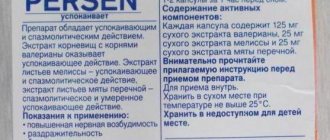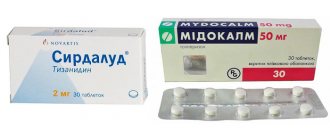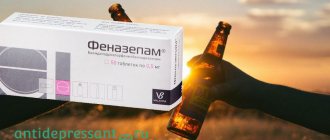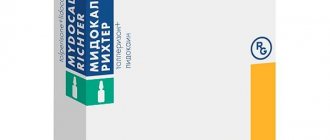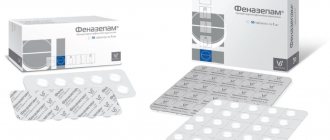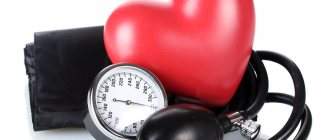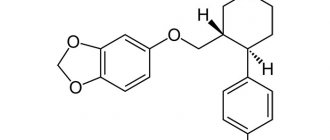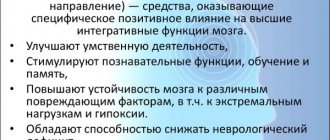So I got to strong sedatives...... Apparently, so much nervous tension has accumulated in my body that ordinary sedatives no longer have the desired effect.
Why did I decide to try Teraligen? Due to the accumulated stress, in addition to my usual short temper, nervousness and agitation, I discovered other unpleasant symptoms of stress: shortness of breath, palpitations, punctures in the heart, and recently I began to have a terribly tormenting lump in my throat. Anyone who has experienced this feeling understands how unpleasant it is! You feel like you don’t have enough air, as if a piece of food is stuck in your throat!
Against the backdrop of all these symptoms, the doctor recommended that I try Teraligen.
I was already prescribed Teraligen a couple of years ago, 1 tablet per night, but then I decided that I could cope without it and did not take it. Maybe then the situation with my nerves was not yet so bad.
This time the doctor described to me a very unusual method of administration:
Teraligen treatment regimen
- ½ tablet at night – 3 days
- 1 tablet at night - 4 days
- 1 tablet evening + 1 tablet at night - 4 days
- 1 tablet 3 times a day for 1.5 – 2 months
- It is necessary to stop taking Teraligen gradually, according to the same scheme.
- I started taking it.
I took Teraligen for only a week and already felt an extraordinary improvement in my condition. Believe it or not! The lump in my throat is completely gone! This was the first and main indicator for me!!! I began to get up in the morning in a great mood, with a huge charge of positive energy and vigor for the day. I just wanted to move mountains!!!
Lately, I couldn’t go shopping for a very long time, everything was starting to irritate me, I didn’t have enough air, and I tried to get out of there as quickly as possible. Although I used to be a notorious shopping maniac! And here, with Teraligen, I visited three supermarkets in one day and was not tired at all!!!!
I was very happy that I had finally found a panacea for my nerve problems!!!!
But! I was suddenly overtaken by one very unpleasant moment!
During the past three-day holidays on March 8, the weather was excellent and sunny. Having rather problematic skin prone to pigmentation, I generously smeared myself with foundation with a huge SPF factor and ran for a walk in the spring sun!
In the evening, when I came home and washed my face, I noticed that my whole face was covered with redness and some kind of small rash, as happens when you overtan in the sun in the summer. And my long-standing pigmentation under the eyes, which I actively struggled with all winter and had almost completely eliminated, has blossomed with renewed vigor!
At first I thought that my foundation had deteriorated over the winter. The next day I applied another cream with fresher SPF protection to my face, but in the evening I observed exactly the same picture.
Since it’s spring now and the sun is getting brighter and more aggressive every day, I stopped taking Teraligen! I can't risk my skin like that on the eve of summer! I will be looking for a replacement for him during this period!
I'll definitely start taking it again in the fall! I have never seen such an amazing, quick result from any sedative!
I recommend buying Teraligen, but if you have similar skin problems, I advise you to postpone taking it until the autumn-winter, cloudy season! Consultation with a doctor is required!!!
I took Teraligen along with this drug to relieve cerebral vasospasm. Perhaps it enhanced the effect of Teraligen and to some extent provoked this unpleasant side effect!!!
Source: https://irecommend.ru/content/neveroyatnyi-izumitelnyi-super-effektivnyi-teralidzhen-moya-istoriya-znakomstva-i-neozhidann
Pharm Group
• Antidepressants.
Pharmacological action – antidepressant, anxiolytic, thymoleptic, sedative. Inhibits the reuptake of neurotransmitters (norepinephrine, serotonin) by the presynaptic nerve endings of neurons, causes the accumulation of monoamines in the synaptic cleft and enhances postsynaptic impulses.
With long-term use, it reduces the functional activity (desensitization) of beta-adrenergic and serotonin receptors in the brain, normalizes adrenergic and serotonergic transmission, and restores the balance of these systems, disturbed during depressive states. Blocks m-cholinergic and histamine receptors of the central nervous system.
When taken orally, it is quickly and well absorbed from the gastrointestinal tract. The bioavailability of amitriptyline by different routes of administration is 30–60%, its metabolite, nortriptyline, is 46–70%. Cmax in the blood after oral administration is achieved after 2.0–7.7 Therapeutic concentrations in the blood for amitriptyline are 50–250 ng/ml, for nortriptyline — 50–150 ng/ml.
Blood protein binding is 95%. Like nortriptyline, it easily passes through histohematic barriers, including the blood-brain barrier, placental barrier, and penetrates into breast milk. T1/2 is 10–26 hours, for nortriptyline - 18–44 In the liver it undergoes biotransformation (demethylation, hydroxylation, N-oxidation) and forms active - nortriptyline, 10-hydroxy-amitriptyline, and inactive metabolites.
It is excreted by the kidneys (mainly in the form of metabolites) within several days. In anxiety-depressive conditions, it reduces anxiety, agitation and depressive symptoms. The antidepressant effect develops within 2–3 weeks after the start of treatment. If you suddenly stop taking it after long-term treatment, withdrawal syndrome may develop.
• Antidepressant [Antidepressants].
Pharmacological action: thymoleptic, sedative, antidepressant.
Pharmacological action - antidysuric, sedative, antidepressant. Inhibits the reuptake of catecholamines (norepinephrine, dopamine, serotonin) in the central nervous system, blocks muscarinic cholinergic receptors in the central nervous system and in the periphery, and has other antimediator properties (including H1-antihistamines).
When taken orally, its bioavailability is 33–62%, Cmax in blood plasma is achieved after 4–8. Metabolized in the liver to form the active metabolite nortriptyline. Therapeutic blood concentrations for amitriptyline and nortriptyline are 120–240 ng/ml. Excretion is mainly renal. Complete elimination occurs within 7 days.
Consequences of combining the drug Teraligen with alcoholic beverages - ODSIS Medical portal
Quite a few patients combine medications with alcohol without any fear. It often happens that such experiences do not pass without leaving a trace and lead to serious intoxication of the body. Therefore, you should not combine any treatment with drinking alcohol, especially if psychotropic drugs like Teraligen are prescribed.
Teraligen and alcohol
Teraligen is classified as a psychotropic drug that has antipsychosomatic and neuroleptic effects on the patient.
The active ingredient of Teraligen - alimemazine tartate - in addition to the main effect, gives the drug additional abilities such as antispasmodic, serotonin-blocking or antihistamine activity.
In addition, there is a sedative, antitussive and antiemetic effect.
It is recommended to take the drug in conditions such as:
- Endogenous or organic neuroses;
- Anxiety and depression, senestopathic depression;
- Sleep disorders;
- Allergic reactions;
- Psychopathy with characteristic asthenic or psychasthenic disorders;
- Excessive emotional agitation and increased anxiety against the background of somatic pathologies;
- Somatized mental disorders.
After taking the drug, its maximum concentration is observed in the blood after 1.5-2 hours, and elimination occurs in about 5 hours through the renal and urinary systems.
If the recommendations regarding the dosage of the drug are followed, no adverse reactions are observed in patients. What cannot be said when combined with the treatment of alcoholic beverages.
Compatibility
The combination of taking Teraligen with alcohol leads to adverse reactions, which are also described in the attached annotation:
- Irritability and anxiety, nightmares and emotional overstimulation;
- Drowsiness and excessive fatigue, lethargy;
- Confusion;
- Visual impairment, manifested by blurred perceived images;
- Disorders such as tremor, an internal need to constantly move, or, conversely, a condition associated with insufficient activity of movements;
- Frequent cases of respiratory arrest during night sleep;
- Extraneous sounds in the ears, frequent dizziness and fainting, decreased blood pressure;
- The condition of dry mucous membranes in the mouth, nasal cavity, pharynx, lack of appetite, various types of allergic manifestations;
- Tachycardia disorders, hyperhidrosis, disorders in bone marrow hematopoiesis;
- Urinary retention;
- Lack of normal tone in the muscular system of the gastrointestinal tract, bladder, as well as muscle relaxation, etc.
As a result of the occurrence of such reactions, the clinical condition of the underlying pathology worsens, for the treatment of which Teraligen was prescribed. Therefore, combining it with products of alcoholic origin is strictly unacceptable.
Possible consequences
The combination of alcohol + Teraligen can be disastrous for the patient, which is caused by the opposite effect of these substances. Doctors claim that combining the drug with alcohol leads to inappropriate behavior by the patient.
Against the background of such mixing, the patient experiences:
- Unreasonable fears and psycho-emotional anxiety;
- Confusion and incomprehensibility of spoken speech;
- Memory losses;
- Loss of control over what is happening and lack of a sense of reality;
- State of delirium;
- Serious nervous system overloads, causing even greater depression of the clinical picture of the pathology, which was treated with Teraligen.
The combination of alcohol with such a psychotropic drug leads to various disorders in cardiovascular activity, which manifest themselves in the form of tachycardic or arrhythmic abnormalities, increased blood pressure, spasm of cerebral vessels, etc.
The renal-hepatic system also benefits from this combination, because it is involved in the breakdown and subsequent elimination of metabolites not only of the drug, but also of ethanol. Therefore, Teraligen should not be combined with alcoholic beverages.
Nosologies
• F20 Schizophrenia. • F29 Non-organic psychosis, unspecified. • F32 Depressive episode. • F33 Recurrent depressive disorder. • F50.2 Bulimia nervosa. • F60.3 Emotionally unstable personality disorder. • F91 Behavioral disorders. • F98.0 Enuresis of inorganic nature. • G43 Migraine. • R52.1 Constant intractable pain.
• F10.3 Withdrawal state. • F20 Schizophrenia. • F29 Non-organic psychosis, unspecified. • F32 Depressive episode. • F33 Recurrent depressive disorder. • F41.2 Mixed anxiety and depressive disorder. • F50.2 Bulimia nervosa. • F60.3 Emotionally unstable personality disorder.
• F90.0 Impaired activity and attention. • F91.9 Behavioral disorder, unspecified. • F92.0 Depressive behavior disorder. • F98.0 Enuresis of inorganic nature. • G43.9 Migraine, unspecified. • G53.0 Neuralgia after herpes zoster (B02.2). • G62.9 Polyneuropathy, unspecified. • G63.2 Diabetic polyneuropathy (E10-E14 with a common fourth sign. 4).
• K25 Stomach ulcer. • K26 Duodenal ulcer. • M79.0 Rheumatism, unspecified. • M79.2 Neuralgia and neuritis, unspecified. • R51 Headache. • R52.1 Constant intractable pain. • R52.2 Other persistent pain. • R52.9 Pain, unspecified. • T14.4 Injury to nerve(s) of unspecified body area.
(Data taken from the active ingredient Amitriptyline). • F20 Schizophrenia. • F29 Non-organic psychosis, unspecified. • F32 Depressive episode. • F33 Recurrent depressive disorder. • F50.2 Bulimia nervosa. • F60.3 Emotionally unstable personality disorder. • F91 Behavioral disorders. • F98.0 Enuresis of inorganic nature. • G43 Migraine. • R52.1 Constant intractable pain.
The drug "Fevarin" helps reduce the factor of suicidal activity
In affective disorders characterized by a constant low mood, there is a risk of complications in the form of suicidal intentions. Because of this, experts insist on the need for timely initiation of treatment measures for this disease. To correct it, it is recommended to take antidepressant medications, and one of them is Fevarin.
Reviews from psychiatrists about this drug clearly prove that it helps eliminate psychosomatic symptoms in a prolonged depressive state. The drug has also proven itself well for manifestations of obsessive-compulsive disorders, expressed in the patient’s appearance of obsessive thoughts and actions (obsessive-compulsive neurosis).
A clear advantage to the use of the described drug is that it belongs to a new generation of drugs that do not worsen the patient’s quality of life.
Components of the preparation
| Pills | 1 table |
| active substance: | |
| amitriptyline hydrochloride | 11.32 mg |
| (corresponds to 10 mg amitriptyline) | |
| amitriptyline hydrochloride | 28.3 mg |
| (corresponds to 25 mg amitriptyline) | |
| excipients: MCC - 40/100 mg; lactose monohydrate (milk sugar) - 40/100 mg; pregelatinized starch - 25.88/64.7 mg; colloidal silicon dioxide (Aerosil) - 0.4/1 mg; talc - 1.2/3 mg; magnesium stearate - 1.2/3 mg |
1 tablet contains amitriptyline (in the form of hydrochloride) 10 or 25 mg; blister 10 pcs. , in a cardboard pack there are 5 blisters.
Which is better: afobazole or phenazepam?
Phenazepam is a drug belonging to the group of tranquilizers. The active substance of the drug is bromodihydrochlorophenylbenzodiazepine. Available in the form of a solution for intramuscular or intravenous administration, as well as in the form of tablets. It has anticonvulsant, central muscle relaxant, sedative-hypnotic and anxiolytic effects. Indications for the use of Phenazepam are:
- emotional lability;
- psychoses;
- prolonged nervous tension;
- alcoholism and drug addiction;
- withdrawal syndrome;
- schizophrenia;
- premedication before surgery;
- athetosis;
- muscle stiffness;
- tics of various types.
Phenazepam is not recommended to be taken during pregnancy and lactation, as well as under the age of 18 years.
Afobazole and Phenazepam are prescribed to reduce nervous tension. The drugs have a sedative effect. Phenazepam is available in the form of tablets and solution for injection. Afobazole is produced in tablet form. Both medications are not recommended for use during pregnancy. Phenazepam is a prescription drug. Afobazole is dispensed from pharmacies without a doctor's prescription.
pharmachologic effect
Neuroleptics, sedatives and hypnotics, anticonvulsants, central and narcotic analgesics, anesthetics, and alcohol potentiate the inhibitory effect on the central nervous system. Enhances the hypertensive effect of catecholamines, blocks the antihypertensive effect of guanethidine and drugs with a similar mechanism of action.
Incompatible with MAO inhibitors. Strengthens the inhibitory effect on the central nervous system of neuroleptics, sedatives and hypnotics, anticonvulsants, analgesics, anesthetics, alcohol; exhibits synergism when interacting with other antidepressants. When used together with neuroleptics and/or anticholinergic drugs, the development of a febrile temperature reaction and paralytic intestinal obstruction is possible.
Potentiates the hypertensive effects of catecholamines and other adrenergic stimulants, which increases the risk of developing heart rhythm disturbances, tachycardia, and severe arterial hypertension. May reduce the antihypertensive effect of guanethidine and drugs with a similar mechanism of action, as well as weaken the effect of anticonvulsants.
When used simultaneously with anticoagulants - derivatives of coumarin or indanedione - it is possible to increase the anticoagulant activity of the latter. Cimetidine increases the plasma concentration of amitriptyline with the possible development of toxic effects, inducers of microsomal liver enzymes (barbiturates, carbamazepine) reduce it.
Quinidine slows the metabolism of amitriptyline; estrogen-containing oral contraceptives may increase bioavailability. Concomitant use with disulfiram and other acetaldehyde dehydrogenase inhibitors may provoke delirium. Probucol may increase cardiac arrhythmias. Amitriptyline may enhance glucocorticoid-induced depression.
Reviews about afobazole
Reviews about Afobazole on forums are quite varied. The main advantages are the effectiveness of the drug for anxiety and panic attacks, availability, relatively low price and almost complete absence of side effects (sedative tablets do not cause drowsiness, weakness or addiction). The effect of their use is noted already on days 4-7 of the course of treatment.
A disadvantage in reviews of Afobazole is that the drug has contraindications (that is, it is not suitable for all groups of patients).
As for the reviews of doctors about Afobazole, they allow us to draw the following conclusion: the drug is effective, but only for conditions that are characterized as moderately severe. But with deep depression it is unlikely to help.
Directions for use and doses
Orally, without chewing, immediately after meals (to reduce irritation of the gastric mucosa). Adults. For adults with depression, the initial dose is 25–50 mg at night, then the dose can be gradually increased, taking into account the effectiveness and tolerability of the drug, to a maximum of 300 mg/day in 3 doses (the largest part of the dose is taken at night).
When a therapeutic effect is achieved, the dose can be gradually reduced to the minimum effective, depending on the patient's condition. The duration of the course of treatment is determined by the patient’s condition, the effectiveness and tolerability of the therapy and can range from several months to 1 year, and if necessary, more.
In old age with mild disorders, as well as with bulimia nervosa, as part of complex therapy for mixed emotional disorders and behavioral disorders, psychoses in schizophrenia and alcohol withdrawal, prescribed in a dose of 25–100 mg/day (at night), after achieving a therapeutic effect, switch for the minimum effective dose - 10–50 mg/day.
Inside, during or after meals. The initial daily dose is 50–75 mg (25 mg in 2–3 doses), if necessary, the dose is gradually increased (by 25–50 mg) to the optimal dose of 150–200 mg/day (most of the daily dose is taken before bedtime). For severe depression resistant to therapy: 300 mg or more, up to the maximum tolerated dose.
(The maximum dose for outpatients is 150 mg/day). After achieving a stable antidepressant effect after 2-4 weeks, the dose is gradually reduced (if signs of depression appear, you must return to the previous dose). For mild disorders, in outpatient practice. Elderly patients - 25-50 mg, maximum - 100 mg in divided doses or once before bedtime. Enuresis.
Inside, intramuscularly.
Which is better: afobazole or phenibut?
Phenibut is a nootropic drug. The active substance of the drug is aminophenylbutyric acid hydrochloride. Phenibut has an anxiolytic and mild psychostimulant effect. Available in tablet form. Indications for prescribing Phenibut are:
- asthenia;
- psychopathy;
- neuroses and neurasthenic conditions;
- sleep disturbance;
- withdrawal syndrome;
- speech disorders;
- vegetative-vascular dystonia;
- migraine-type headache;
- complex therapy of open-angle glaucoma;
- dizziness due to disturbances of the vestibular apparatus;
- tics;
- vascular diseases of the brain.
The drug is not used in childhood, pregnancy and lactation. In most cases, Phenibut is a well-tolerated drug. Side effects after its use are rare.
Afobazole and Phenibut reduce the severity of anxiety and normalize the emotional state. Produced by a domestic manufacturer in tablet form. The drugs are used for similar indications. The differences between them are as follows:
- The active substance of Afobazole is afobazole. The active ingredient in Phenibut is aminophenylbutyric acid hydrochloride;
- Afobazole is a representative of the group of tranquilizers. Phenibut is a nootropic drug;
- the effect of Phenibut occurs faster;
- Afobazole has fewer side effects;
- Phenibut is a prescription drug. Afobazole is available without a doctor's prescription;
- Afobazole has age restrictions for use. Phenibut is prescribed in pediatric practice if there are strict indications.
Components contraindications
Hypersensitivity. Use of MAO inhibitors in the previous 2 weeks. Myocardial infarction (acute and recovery periods). Heart failure in the stage of decompensation. Violation of intracardiac conduction. Severe arterial hypertension. Benign prostatic hyperplasia. Atony of the bladder. Paralytic ileus. Pyloric stenosis. Peptic ulcer of the stomach and duodenum in the acute stage. Acute diseases of the liver and/or kidneys with severe impairment of their function. Blood diseases. Children up to 6 years of age (for injection forms - up to 12 years). Contraindicated during pregnancy. Breastfeeding should be stopped during treatment.
Depression (especially effective for anxiety and depression). Mixed emotional and behavioral disorders. Phobic disorders. Pediatric enuresis (except for children with a hypotonic bladder). Psychogenic anorexia. Bulimic neurosis. Severe neurogenic pain. Migraine prevention.
Hypersensitivity. Toxic depression of the central nervous system. Decompensated heart disease. Acute and recovery period of myocardial infarction. Impaired conduction of the heart muscle. Hypertension III degree. Acute liver and kidney diseases. Blood diseases. Peptic ulcer of the stomach and duodenum in the acute stage. Glaucoma.
Depression of various etiologies (especially with severe anxiety and agitation). Including endogenous. Involutional. Reactive. Neurotic. With organic brain damage. Medication; schizophrenic psychoses. Mixed emotional disorders. Behavioral disorders. Bulimia nervosa. Children's enuresis (except for children with bladder hypotension). Chronic pain syndrome (neurogenic). Migraine prevention.
Hypersensitivity. Use of MAO inhibitors in the previous 2 weeks. Myocardial infarction (acute and recovery periods). Heart failure in the stage of decompensation. Violation of intracardiac conduction. Severe arterial hypertension. Benign prostatic hyperplasia.
Atony of the bladder. Paralytic ileus. Pyloric stenosis. Peptic ulcer of the stomach and duodenum in the acute stage. Acute diseases of the liver and/or kidneys with severe impairment of their function. Blood diseases. Children up to 6 years of age (for injection forms - up to 12 years).
Which is better: afobazole or atarax?
Atarax is a sedative drug. The active substance of the drug is hydroxyzine hydrochloride. Available in tablet form and solution for injection. Atarax is prescribed to reduce anxiety levels, and also as a premedication during preparation for surgical interventions. Prescribed in short courses. Indications for prescribing Atarax include:
- anxiety attacks;
- emotional lability;
- chronic alcoholism;
- withdrawal syndrome;
- skin itching;
- sleep disturbance.
Afobazole and Atarax are not addictive after their use. Used for diseases of the nervous system. Medicines have similar indications for use. Not recommended for use during pregnancy and lactation. Differences between Afobazole and Atarax:
- The effect of Atarax occurs 30 minutes after taking the drug. Afobazole is characterized by a cumulative effect;
- Atarax has a sedative, antihistamine and antiemetic effect. Afobazole does not have similar effects;
- Afobazole is characterized by rapid elimination from the body. Therefore, the possibility of overdose is minimized. Atarax has a long elimination period;
- Atarax is a prescription drug. Afobazole can be purchased without a doctor's prescription.
Side effects
Caused by blockade of peripheral m-cholinergic receptors. Dry mouth, urinary retention, constipation, intestinal obstruction, blurred vision, accommodation paresis, increased intraocular pressure, increased sweating. From the nervous system and sensory organs. Headache. Dizziness. Ataxia.
Increased fatigue. Weakness. Irritability. Drowsiness. Insomnia. Nightmarish dreams. Motor excitement. Tremor. Paresthesia. Peripheral neuropathy. Changes on the EEG. Impaired concentration. Dysarthria. Confusion. Hallucinations. Noise in ears. From the cardiovascular system: tachycardia.
Orthostatic hypotension. Arrhythmia. Blood pressure lability. Widening of the QRS complex on the ECG (impaired intraventricular conduction). Symptoms of heart failure. Fainting. Change in blood picture. Including agranulocytosis. Leukopenia. Eosinophilia. Thrombocytopenia. Purpura. From the gastrointestinal tract. Nausea, vomiting, heartburn, anorexia, discomfort in the epigastrium, gastralgia, increased activity of liver transaminases, stomatitis, taste disturbance, darkening of the tongue.
From the side of metabolism. Galactorrhea, changes in ADH secretion; rarely - hypo- or hyperglycemia, impaired glucose tolerance. From the genitourinary system. Changes in libido, potency, testicular swelling, glucosuria, pollakiuria. Allergic reactions. Skin rash, itching, angioedema, urticaria. Other.
Increase in the size of the mammary glands in women and men. Hair loss. Enlarged lymph nodes. Photosensitivity. Increased body weight (with long-term use). Withdrawal syndrome: headache. Nausea. Vomit. Diarrhea. Irritability. Sleep disturbance with bright lights. Unusual dreams. Increased excitability (after long-term treatment. Especially in high doses. With abrupt cessation of taking the drug).
Dry mouth, urinary retention, constipation, intestinal obstruction, blurred vision, accommodation paresis, increased intraocular pressure, increased sweating. Headache. Dizziness. Ataxia. Increased fatigue. Weakness. Irritability. Drowsiness. Insomnia. Nightmarish dreams. Motor excitement. Tremor. Paresthesia. Peripheral neuropathy. Changes on the EEG. Impaired concentration. Dysarthria. Confusion. Hallucinations. Noise in ears. Orthostatic hypotension. Arrhythmia. Blood pressure lability. Widening of the QRS complex on the ECG (impaired intraventricular conduction). Symptoms of heart failure. Fainting. Change in blood picture. Including agranulocytosis. Leukopenia. Eosinophilia. Thrombocytopenia. Purpura. Nausea, vomiting, heartburn, anorexia, discomfort in the epigastrium, gastralgia, increased activity of liver transaminases, stomatitis, taste disturbance, darkening of the tongue. Galactorrhea, changes in ADH secretion; rarely - hypo- or hyperglycemia, impaired glucose tolerance. Changes in libido, potency, testicular swelling, glucosuria, pollakiuria. Skin rash, itching, angioedema, urticaria. Increase in the size of the mammary glands in women and men. Hair loss. Enlarged lymph nodes. Photosensitivity. Increased body weight (with long-term use). Withdrawal syndrome: headache. Nausea. Vomit. Diarrhea. Irritability. Sleep disturbance with bright lights. Unusual dreams. Increased excitability (after long-term treatment. Especially in high doses. With abrupt cessation of taking the drug).
From the nervous system and sensory organs. Violation of accommodation, increased intraocular pressure, drowsiness. From the cardiovascular system and blood (hematopoiesis, hemostasis): tachycardia, arrhythmia, orthostatic arterial hypertension, changes in the blood picture, including agranulocytosis. From the gastrointestinal tract.
Stomatitis, taste disturbance, anorexia, nausea, vomiting, epigastric discomfort, dry mouth, stool retention, intestinal obstruction, liver dysfunction (rare). Other. Skin rash, hair loss, swollen lymph nodes, fever, gynecomastia, galactorrhea, changes in ADH secretion, decreased libido, potency, increased body weight with long-term use, urinary retention.
Which is better: afobazole or glycine?
Glycine is a metabolic drug. Used to regulate metabolic processes in the body. The active substance of the drug is glycine. The drug reduces the severity of tension, increases performance and concentration, normalizes sleep, improves blood microcirculation. Available in tablet form. Indications for prescribing the drug are:
- sleep disturbance;
- history of heart attacks and strokes;
- recovery period after traumatic brain injury;
- vegetative-vascular dystonia;
- prolonged stress;
- emotional lability.
Glycine is not recommended for use during pregnancy and lactation. The drug has no age restrictions for use.
Glycine and Afobazole have a sedative effect. The drugs have a positive effect on brain activity, memory and mood. Available in tablet form. The differences between the drugs are as follows:
- Afobazole is not used in pediatric practice. Glycine has no such restrictions;
- Afobazole does not increase the body's energy reserves. Glycine improves performance;
- Glycine contains plant components. Afobazole is a chemical drug;
- pregnancy is a contraindication for the use of Afobazole. Glycine is approved for use during pregnancy and breastfeeding;
- Afobazole is available in the form of tablets for oral administration. Glycine is produced in the form of sublingual tablets.
Overdose
Symptoms Drowsiness. Disorientation. Confusion. Pupil dilation. Increased body temperature (fever). Dyspnea. Dysarthria. Excitation. Hallucinations. Convulsive seizures. Muscle stiffness. Stupor. Coma. Vomit. Arrhythmia. Arterial hypotension. Heart failure. Respiratory depression. Treatment.
Termination of therapy. Gastric lavage. Fluid infusion. IM or IV administration of physostigmine 1–3 mg every 0.5–2 hours (for children, physostigmine administration begins with a dose of 0.5 mg. Then the dose is repeated at 5-minute intervals to determine the minimum effective dose. But not more than 2 mg). Physostigmine should be used only for coma, respiratory depression and other severe disorders;
Symptoms Hallucinations, convulsions, delirium, coma, cardiac conduction disturbances, extrasystole, ventricular arrhythmia, hypothermia. Treatment. Gastric lavage. Taking activated carbon suspension. Laxatives. Fluid infusion. Symptomatic therapy. Maintaining body temperature. Monitor cardiovascular function for at least 5 days. Td; relapse of disorders may occur after 48 hours or later. Hemodialysis and forced diuresis are ineffective.
Don't self-medicate!
As you can see, the reviews from psychiatrists available about the drug “Fevarin” can be considered convincing evidence of its effectiveness. But prescribing this drug to yourself is very dangerous, despite the above evidence of its low toxicity. After all, the human psyche is a subtle substance that can be easily disturbed. And this is especially true in cases where some disorders already exist. This drug can only be prescribed by a specialist, and it should be taken only in the prescribed doses and under the supervision of a doctor!
Source: FB.ru


